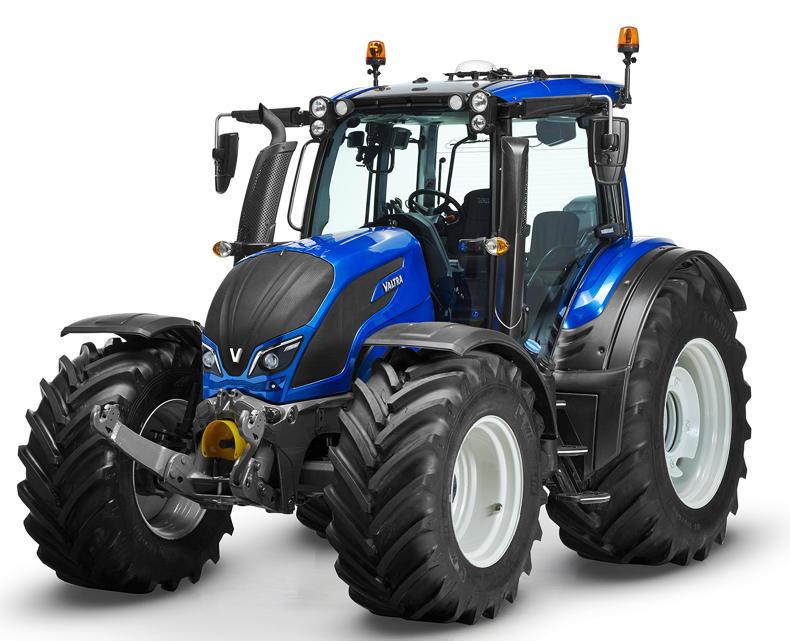In this week’s machinery section we look at the performance of the Kverneland i-Plough in the field. As was evident at the recent AgTech conference held by the Irish Farmers Journal, we have come a long way in terms of technology. ISOBUS technology is now being utilised by more manufacturers, with Kverneland just one of many.
In keeping with the technology focus, we also look at the use of drones in agriculture. Mapping and analysing fields are but a few roles that this technology can offer. Tillage farmer Kevin Nolan commented that with the help of a drone he analysed 176 acres in 2.5 minutes, with live crop images sent back to the computer monitor.
Bredal is synonymous with bulk fertiliser application, we catch up with Trevor Richardson to look at the latest development in the F Series.
TAMS II
After creating an initial bubble of excitement, mixed feelings and uncertainty are common sentiments about TAMS II for tillage among both farmers and the machinery industry in general. Dealers feel that farmers have delayed decisions on replacing equipment, which is a very natural reaction. Farmers feel some of the specifications on certain machine items have let them down. The scheme’s focus is not to sell machines, but promote sustainable farming. The Department of Agriculture has responded to the machinery industry, and stated that a disc harrow clearance of 450mm will be eligible under the scheme. Combined seed and fertiliser hoppers are permitted on min till tined and disc drills. The Department is also looking at the requirement for a double row of discs on these types of machines, as it gives an advantage to certain makes over others. The final point made by farmers is in relation to fertiliser spreaders. The logic to fully subsidise sprayers over fertiliser spreaders is questioned.
Pöttinger sees strong sales in seed drill sector
Pöttinger managed to achieve a turnover of €301m with a staff of 1,700 during financial year 2015-2016 despite a generally difficult market situation and an overall downturn in sales in the agricultural technology industry.
Grassland technology, accounting for 57% in the agricultural technology sector, is the main source of sales, followed by tillage and seed drill technology at 28%. The effort invested in developing new tillage, seedbed preparation and seed drill products at Pöttinger has paid dividends, with an increase in sales of 20% in the seed drill sector compared with the previous year.
An export share of 86.5% demonstrates the importance of internationalisation for Pöttinger. The top-five turnover growth countries in terms of absolute machine sales compared with the previous year are Ukraine, Canada, France, Japan and China.
Together with Germany at around 19%, Austria and France with 13.5% of total sales each represent the largest and most important individual markets.
Valtra wins Red Dot Design Award
Valtra’s SmartTouch armrest, unveiled in Paris in February, has won the Red Dot 2017 Design Award, while the fourth-generation Valtra N Series received an honourable mention in the same competition.
Jari Rautjärvi, VP, brand lead, Valtra, said: “The success of the Valtra SmartTouch armrest in particular is very rewarding, as we have focused in recent years especially on usability and the user experience in order to provide concrete benefits to the customer in their everyday work.”
Valtra says its SmartTouch armrest and user interface are groundbreaking in terms of ease of use. All of the controls on the SmartTouch armrest are logically arranged and within easy reach.
Special attention has been paid to ergonomics, user comfort, ease of use and simplicity.
Kimmo Wihinen, head of industrial design and user experience at Valtra, said: “We have had breathtaking success in recent years. The N and T Series have won numerous awards, and this year the new A4 Series was named Machine of the Year 2017 in its size category at the SIMA Show in Paris. The latest Red Dot 2017 Design Awards prove once again how industrial design can be applied to make the most of the latest technology on human terms and according to customer needs.”
This year the Red Dot competition received more than 5,500 entries from 55 countries. The jury comprised 40 international design experts.
The awards will be presented to the winners at the Aalto Theatre in Essen, Germany, on 3 July.
Valtra’s recent awards provide a solid basis and legitimacy for the company’s own design competition, which was launched at the SIMA Show in Paris in February.
Design competition
The Valtra Design Competition is open this spring to design students, individual designers and design studios worldwide.
The aim of the competition is to seek the views of designers regarding the tractor of the future and how they can help agriculture become more efficient and environmentally friendly.
The three best proposals will be announced and awarded on 31 May 2017. Terms and conditions can be found www.valtra.com/designchallenge.






 This is a subscriber-only article
This is a subscriber-only article











SHARING OPTIONS: